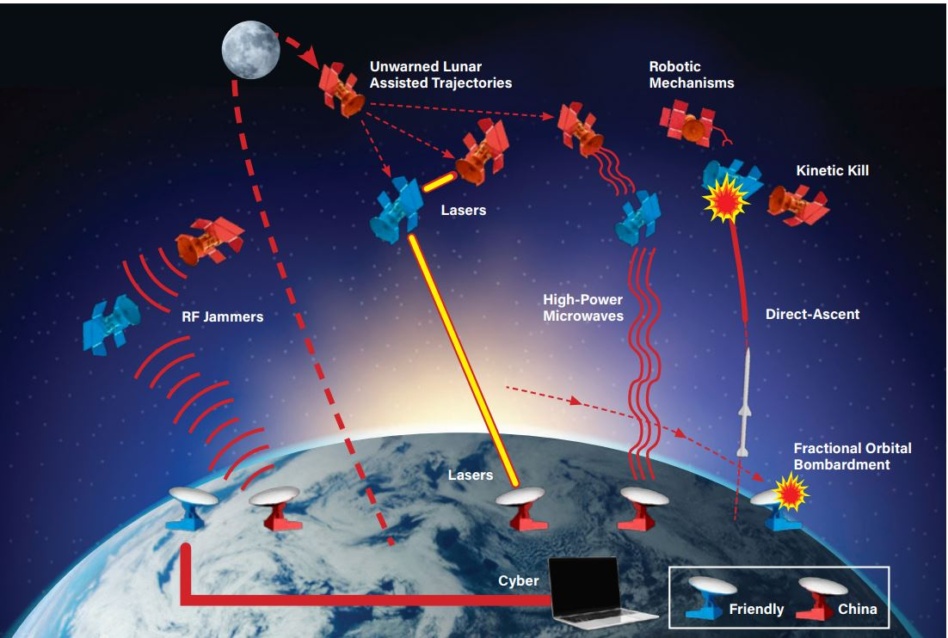It’s about time for the US Space Force to start seriously building out its counterspace capabilities, the Mitchell Institute for Aerospace Studies argues in a report released yesterday.
The report looks at what threats US assets face in space, particularly from China, and encourages the USSF to start building out its own arsenal of military defenses in space sooner rather than later.
“I think we’re past the point of, ‘Is space a warfighting domain?’” Maj. Gen. David Miller of the US Space Command said on a press call. “I think we’re past the point of, ‘Has space been weaponized?’” The answer to both questions, based on past actions from the US’ adversaries such as China and Russia, is an unequivocal yes.
The threat at hand
Since the world started launching satellites 60+ years ago, the space domain has remained, essentially, peaceful. Still, it hasn’t been entirely without conflict.
- Several countries have kinetic direct-ascent anti-satellite capabilities (i.e., the ability to target and destroy a specific satellite in orbit), and there have been 16 such ASAT tests since 1968. Most recently, Russia destroyed a defunct Soviet satellite in Nov. 2021, creating a debris field in LEO.
- Other, non-kinetic ASAT approaches—including RF jamming and cyberattacking, among others—have also been utilized in wartime scenarios, including by Russia during its invasion of Ukraine.
The Mitchell Institute argues that China has been more aggressive in its development of counterspace capabilities than the US, and that if the US isn’t prepared, an attack on its space assets could wreak havoc on military systems as well as civilians’ daily lives.
“A day without space would be a bad day,” Robert Atkin, VP of special space systems at General Atomics, said on the call. “A month without space could very easily bring our society to a complete grinding halt.”
Building a defense
There are a few agreements in place to help ensure the continued safety and security of the space domain, including the 1967 Outer Space Treaty banning the use of weapons of mass destruction in space. More recently, the US led the charge last year on aself-imposed ban on kinetic direct-ascent ASAT testing. Beyond that, though, international limitations on weapons in space are slim.
The report encourages the USSF to speed up its production of several categories of counterspace capabilities:
- Space situational awareness (SSA). It’s very tough to defend yourself against an adversary you never saw coming.
- Resilience to attack. The DoD is looking into approaches, including proliferated architectures, to ensure that potential threats don’t bring down entire space capabilities.
- Responsible counterspace. “The United States has largely shunned the thought of fielding space weapons since the end of the Cold War,” the report’s author, Charles Galbreath, wrote. “However, recognizing space as a warfighting domain means any serious effort to achieve space security must include space weapons.”




